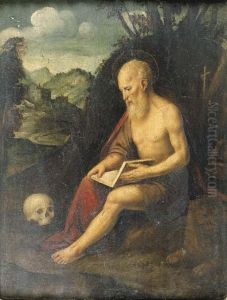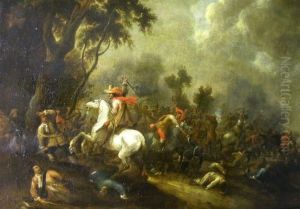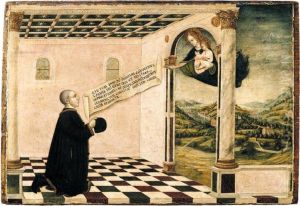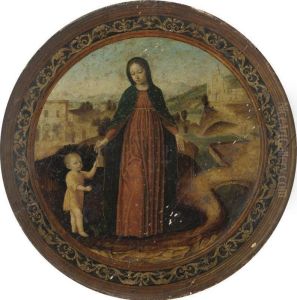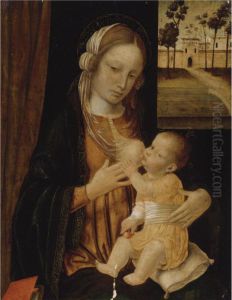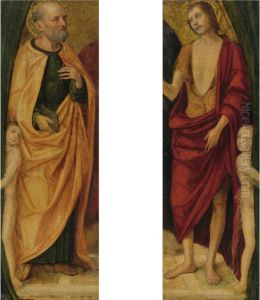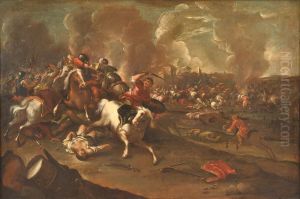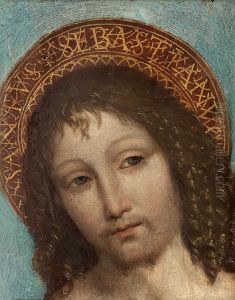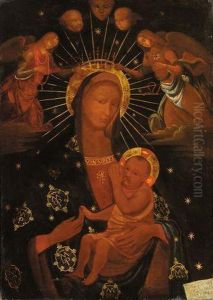Ambrogio Stefano Di Borgognone Paintings
Ambrogio Stefano di Borgognone, also known as Ambrogio da Fossano or simply as Ambrogio Borgognone, was an Italian painter of the Renaissance period, active mainly in Milan. While his exact birthdate is not known, he is believed to have been born around 1453 in Fossano, a town in Piedmont, hence one of his monikers. Borgognone is noted for his significant contribution to Lombard painting and is recognized for his refined and pious compositions that often featured religious themes.
Borgognone's early life and training are not well documented, but it is speculated that he may have been a pupil of the painter Vincenzo Foppa. His style is distinguished by its gentle piety and grace, characteristics that are evident in the frescoes and altarpieces he produced. He is known to have been greatly influenced by the Netherlandish painters of the time, which is reflected in his meticulous attention to detail and his use of oil glazes to achieve depth in color.
One of the artist's most notable works is the fresco cycle at the Certosa di Pavia, a monastery near Milan, which he began in 1486 and continued to work on for many years. The frescoes depict scenes from the life of the Virgin Mary and are praised for their serene beauty and emotional depth. Borgognone's work at the Certosa di Pavia significantly influenced the Lombard school of painting, and his style was emulated by many contemporaries and followers.
Borgognone's paintings are characterized by their serene and ethereal quality, with figures that are often elongated and set in tranquil landscapes or architectural settings. He had a talent for creating a sense of spatial depth and used a subdued color palette, which added to the contemplative atmosphere of his works.
Ambrogio Borgognone's exact year of death is also uncertain, but he is believed to have died in 1523. His legacy lives on through his contributions to the Lombard artistic tradition, and his works continue to be studied and admired for their quiet elegance and devotional spirit.
